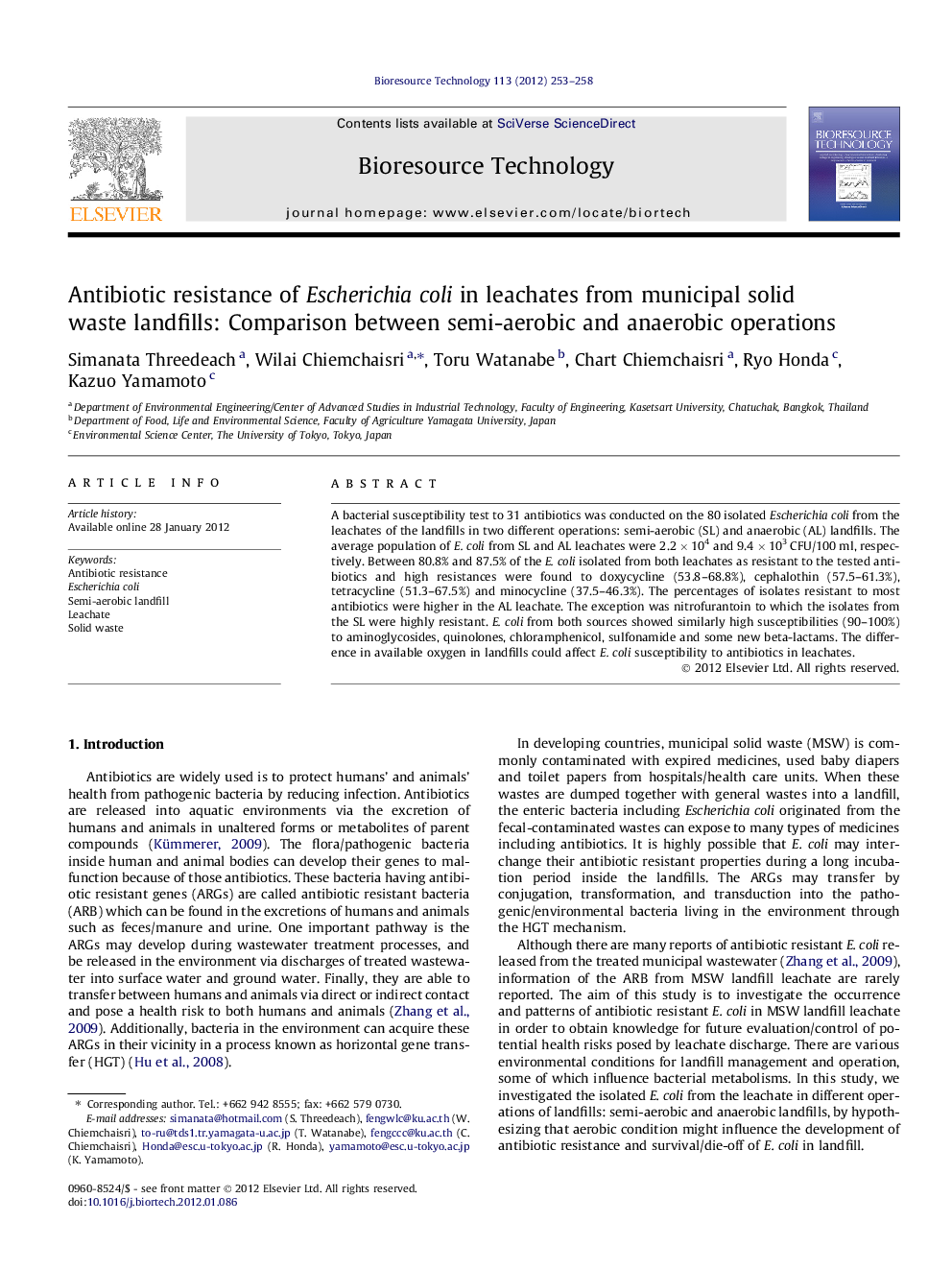| Article ID | Journal | Published Year | Pages | File Type |
|---|---|---|---|---|
| 681479 | Bioresource Technology | 2012 | 6 Pages |
A bacterial susceptibility test to 31 antibiotics was conducted on the 80 isolated Escherichia coli from the leachates of the landfills in two different operations: semi-aerobic (SL) and anaerobic (AL) landfills. The average population of E. coli from SL and AL leachates were 2.2 × 104 and 9.4 × 103 CFU/100 ml, respectively. Between 80.8% and 87.5% of the E. coli isolated from both leachates as resistant to the tested antibiotics and high resistances were found to doxycycline (53.8–68.8%), cephalothin (57.5–61.3%), tetracycline (51.3–67.5%) and minocycline (37.5–46.3%). The percentages of isolates resistant to most antibiotics were higher in the AL leachate. The exception was nitrofurantoin to which the isolates from the SL were highly resistant. E. coli from both sources showed similarly high susceptibilities (90–100%) to aminoglycosides, quinolones, chloramphenicol, sulfonamide and some new beta-lactams. The difference in available oxygen in landfills could affect E. coli susceptibility to antibiotics in leachates.
► Susceptibility test to 31 antibiotics on Escherichia coli in semi-aerobic and anaerobic landfill leachates was studied. ► Over 80% of E. coli isolates had resistance to antibiotics especially doxycycline, cephalothin, tetracycline and minocycline. ► Percentages of resistance were found higher in anaerobic than semi-aerobic landfill leachate.
